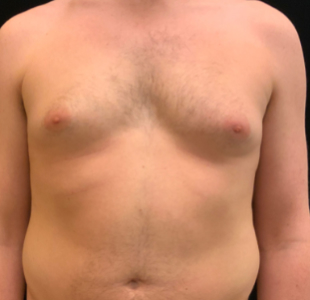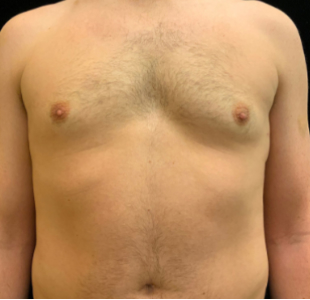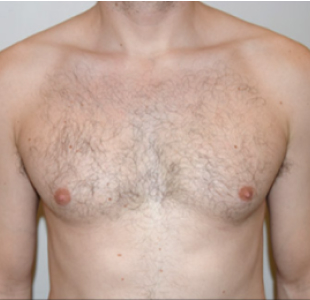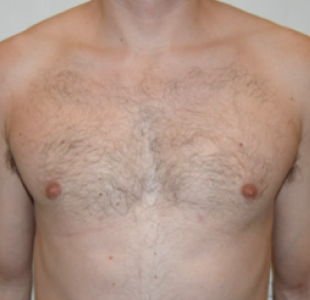Gynecomastia
Gynecomastia refers to enlarged male breasts, resulting in a feminine-appearing chest in boys or men. There may be excess breast tissue in one or both breasts.
The condition is sometimes related to hormones, occurring in babies due to estrogen from their mother’s milk or in teenagers due to fluctuating hormones. In these cases, gynecomastia usually resolves on its own once the individual reaches adulthood.
Adult men can also have gynecomastia unrelated to hormones. It is usually a result of an individual having more breast tissue or more fat in the chest. Gynecomastia is not a disease – some men just naturally have larger breasts than other men. Certain medical conditions and medications may also contribute to gynecomastia, however.
Though it is typically a harmless condition, gynecomastia can cause much frustration and embarrassment. Men with enlarged breasts may feel self-conscious in social situations when one is expected to go shirtless, such as at the beach, locker room, or gym. For men frustrated with gynecomastia, Dr. David Rapaport is a board-certified surgeon in NYC who works with a talented team, specializing in body contouring to help you achieve a more masculine body.
*Individual results may vary.
Learn More About Gynecomastia
Take the Next Step
Every patient’s transformation journey at Rapaport Plastic Surgery begins with a detailed consultation with Dr. Rapaport. To learn more about gynecomastia treatment and determine if it’s the right choice for you, fill out the form below or call us at (212) 249-9955 to schedule an appointment. Our team is dedicated to providing the best plastic surgery NYC has to offer.
Ready to book a consultation or treatment? Just click the Book Now button below to schedule online.




